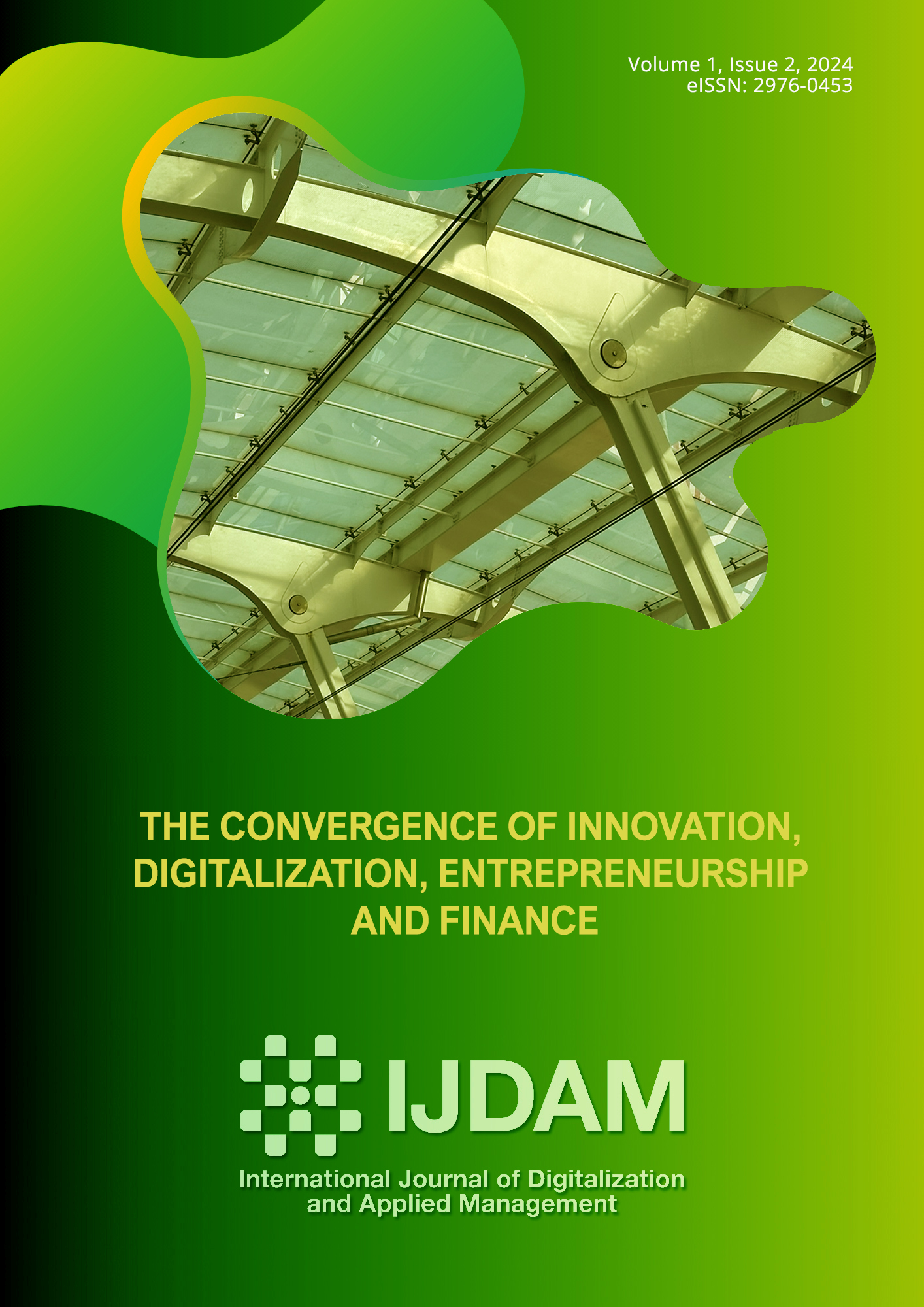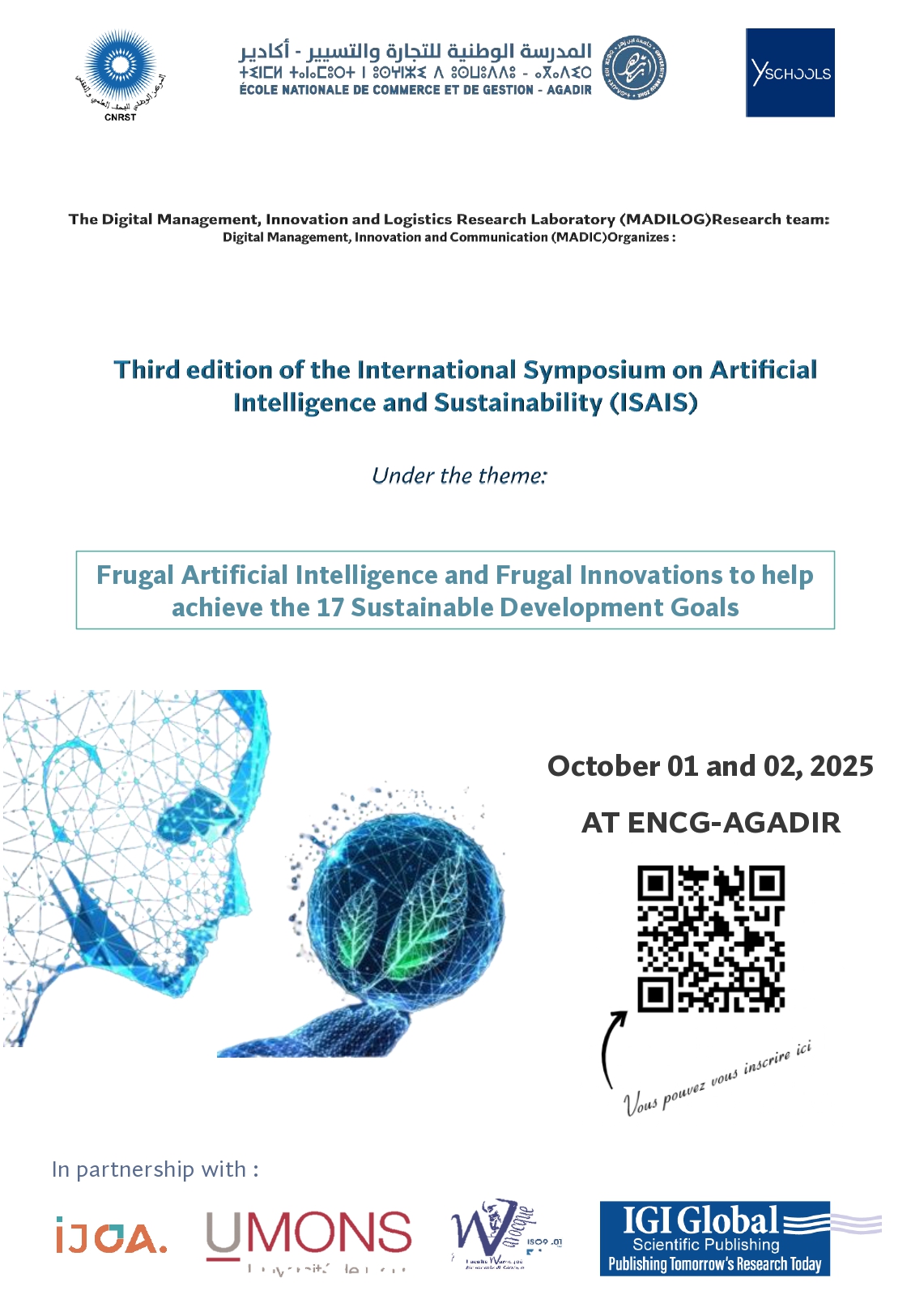Contribution to the Study of the Intra-personal Factors of Acceptance and use of Information and Communication Technologies in the Educational Context
The Case of SI Massar in the Souss Massa Region
DOI:
https://doi.org/10.23882/ijdam.24139Keywords:
Acceptance, intra-personnel factory, ICT, Information System, MassarAbstract
This research aims primarily at identifying the most significant intrapersonal factors to predict the acceptance behavior of Information and Communication Technologies (ICT), specifically the Massar Information System (MIS), by Moroccan teachers. The focus is on studying the nature of the influence relationships that may exist between teachers' intention to use the MIS and the most significant intrapersonal factors. To achieve this, we employed the Technology Acceptance Model developed by Venkatesh and Bala in 2008 as the main theoretical framework. Furthermore, in this study, we adopted a positivist epistemological position and a hypothetico-deductive reasoning. Indeed, a questionnaire was administered, and survey data were collected from a sample of 400 teachers working in the Souss Massa region, with a response rate of 13.75%. The processing and analysis of the collected data were conducted using Smart PLS v4 software. The results indicate that self-efficacy and the pursuit of pleasure are the two intrapersonal factors that significantly influence teachers' intention to use the MIS. However, despite the satisfactory and consistent results of this study with those of some empirical studies in other contexts, generalizing them is challenging due to the small size of the studied sample and the specificities of the technology under investigation.
References
A.Bandura. (1977). Théorie sociale cognitive de Bandura. 1977, 2–4.
ABOULAHCEN, A., & JAOUHARI, L. (2022). Proposition d ’ un modèle conceptuel d’analyse des facteurs explicatifs de l ’ acceptation des technologies d ’ information et de communication ( TIC ) dans le contexte éducatif . In Faculté des Sciences juridiques Economiques et Sociales. Agadir (Ed.), L’ENTREPRISE CONNECTEE: UN NOUVEAU BUSINESS MODEL(pp. 34–43).
Adamson, I., & Shine, J. (2003). Extending the new technology acceptance model to measure the end user information systems satisfaction in a mandatory environment: A Bank’s Treasury. Technology Analysis and Strategic Management, 15(4), 441–455. https://doi.org/10.1080/095373203000136033
Anne Cordier & al. (2020). De la formation professionnelle al’ecole, et reciproquement Pour une culture numerique partagee et emancipatrice –Colloque PRUNE.pdf. L P’ R P U C N P Emancipatrice, 11. https://prune.conference.univ-poitiers.fr/de-la-formation-professionnelle-a-lecole-et-reciproquement-pour-une-culture-numerique-partagee-et-emancipatrice/
ANRT. (2021). Équipement Et Usages Des Tic.
Bobillier-Chaumon, M., & Dubois, M. (2009). L’adoption des technologies en situation professionnelle: quelles articulations possibles entre acceptabilitéet acceptation? Le Travail Humain, 72(4), 29. https://doi.org/10.3917/th.724.0355
Bonfils, P. (2020). Repenser les dispositifs de formation à l’aune de la pandémie? Distances et Médiations Des Savoirs, 31, 1–11. https://doi.org/10.4000/dms.5583
Boulaire, C., & Balloffet, P. (1999). Freins et motivations à l ’ utilisation d ’ Internet: une exploration par le biais de métaphores. Recherche et Applications En Marketing, 14(1), 21–39.
Broonen, J. P. (2007). Le passé et l’avenir du concept de volition pour la psychologie de l’éducation et de la formation. Les Cahiers Internationaux de Psychologie Sociale, Numéro 74(2), 3–17. https://doi.org/10.3917/cips.074.0003
Bullat-Koelliker, C., Gina, S., Peraya, D., & Charlier, B. (2003). Directeur de mémoire: Membres du jury.
Compeau, D. R., & Higgins, C. A. (1995). Computer Self-Efficacy: Measure And Initial Development Of A Test. MIS Quarterly, 19(2), 189–211. https://www.astm.org/Standards/E2368.htm
DAHHANE, A. B., AKRICH, S., ELKTIRI, L., & EL BETTIOUI, R. A. C. H. I. D. (2024). IMPACT DE LA COMPTABILITE ANALYTIQUE SUR LA PERFORMANCE FINANCIERE DES BANQUES MAROCAINES: EFFET MODERATEUR DES SYSTEMES D’INFORMATION. International Journal of Digitalization and Applied Management,1(1), 42-56. https://doi.org/10.23882/ijdam.24089
El Harbi, S., & Mansour, N. (2008). La théorie du comportement planifié d’Ajzen (1991): Application empirique au cas tunisien. 9ème Congrès International Francophone En Entrepreneuriat et PMA, 1991, 1–14.
Faurie, I., & Leemput, C. van de. (2007). Influence du sentiment d’efficacité informatique sur les usages d’internet des étudiants. L’O ientation Scolaire et Professionnelle, 36/4, 533–552. https://doi.org/10.4000/osp.1549
Galand, C. (2016). Quatre niveaux d ’ explication pour anticiper les freins à la conduite d ’ un changement. Stimulus, 2–3.
Henseler, J., Ringle, C. M., & Sinkovics, R. R. (2009). The use of partial least squares path modeling in international marketing. Advances in International Marketing, 20(2009), 277–319. https://doi.org/10.1108/S1474-7979(2009)0000020014
Ibanescu, G. (2011). Facteurs d’acceptation et d’utilisation des technologies d’Information: Une étude empirique sur l’usage du logiciel «Rational Suite»par les employés d’une grande compagnie de services informatiques. In Université du Québec à Montréal. Mémoire présenté comme exigence partielle de la Maitrise en Informatique de gestion.
J.Hulland. (1999). USE OF PARTIAL LEAST SQUARES (PLS) IN STRATEGIC MANAGEMENT RESEARCH, A REVIEW OF FOUR RECENT STUDIES. Strategic Management Journal, 20(1), 195–204. https://doi.org/10.1080/23311975.2023.2174246
Jacob Cohen. (1988). Statistical Power Analysis for the Behavioral Sciences(SECOND). LAWRENCE ERLBAUM ASSOCIATES, PUBLISHERS.
Livian, Y. (2015). INITIATION A LA METHODOLOGIE DE RECHERCHE EN SHS.Maïlys Rondier. (2003). A . Bandura . Auto-efficacité . Le. L’ S P , Éditions D, 3–5.
Marie-Laure Gavard-Perret et al. (2008). Méthodologie de la recherche Réussir son mémoire ou sa thèse en sciences de gestion.(PEARSON EDUCATION (ed.)).
Proulx, S. (2005). Penser les usages des TIC aujourd’hui: enjeux, modèles, tendances. Enjeux et Usages Des TIC: Aspects Sociaux et Culturels, 1, 7–20.
Sievert, M. E., Albritton, R. L., Roper, P., & Clayton, N. (1988). Investigating computer anxiety in an academic library. In Information Technology and Libraries(Vol. 7, Issue 3, pp. 243–252).
Venkatesh, V., & Bala, H. (2008). Technology acceptance model 3 and a research agenda on interventions. Decision Sciences, 39(2), 273–315. https://doi.org/10.1111/j.1540-5915.2008.00192.x
Venkatesh, Viswanath, Thong, J. Y. L., & Xin Xu. (2012). Consumer Acceptance and Use of Information Technology: Extending the Unified Theory of Acceptance and Use of Technology. MIS Quarterly, 36(1), 157–178.
Venkatesh, Viswanath, Thong, J. Y. L., & Xu, X. (2012). Consumer acceptance and use of information technology: Extending the unified theory of acceptance and use of technology. MIS Quarterly: Management Information Systems, 36(1), 157–178. https://doi.org/10.2307/41410412
Venkatesh, Viswanath, Thong, J. Y. L., & Xu, X. (2016). A I S ssociation for nformation ystems Unified Theory of Acceptance and Use of Technology: A Synthesis and the Road Ahead. J Ournal, 17(5), 328–376.
Downloads
Published
How to Cite
Issue
Section
License
Copyright (c) 2024 Aziz ABOULAHCEN, Mohamed DAANOUN, Lhassane JAOUHARI

This work is licensed under a Creative Commons Attribution-NonCommercial 4.0 International License.


 Portugal
Portugal









